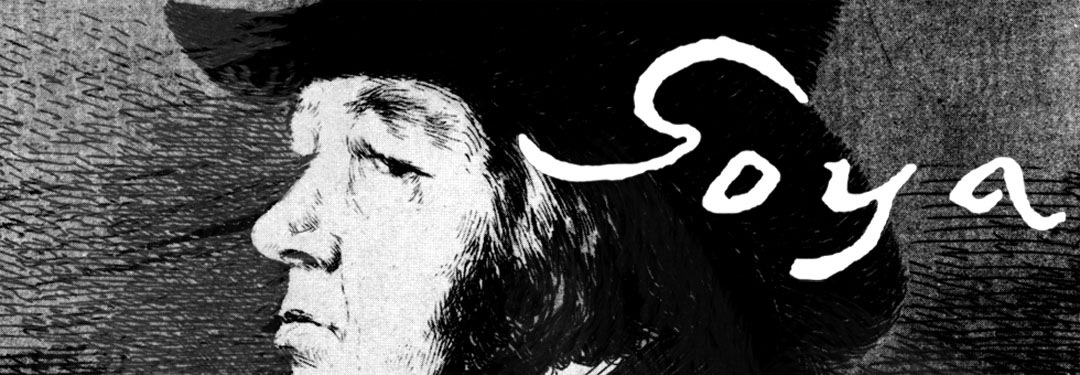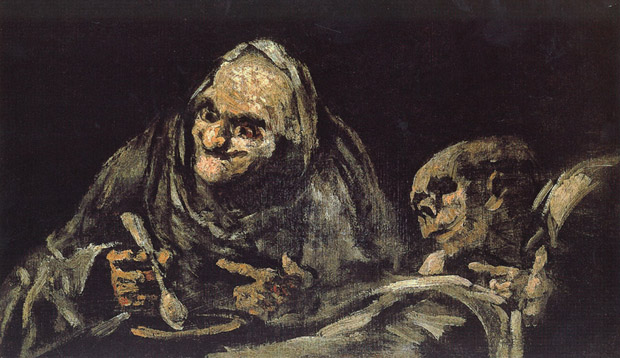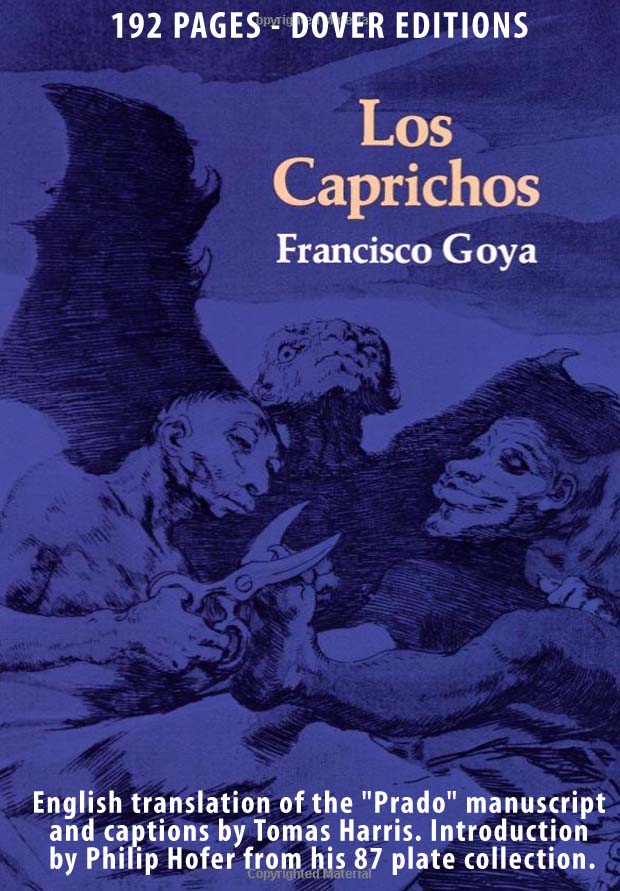The Black Paintings - Old Men Eating
Click for larger (980 pixel) wide image.
The Black Paintings
Old Men Eating
1820-23 Oil on plaster, transferred to canvas
20 7/8 inches by 33 1/2 inches
53 cm x 85 cm
Prado Museum, Madrid
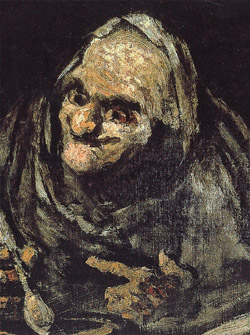
Detail image, click to enlarge
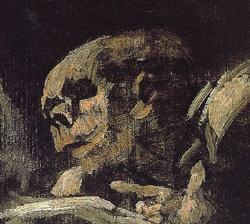
Click detail image to enlarge.
Goya painted this image in his dining room at La Quinta del Sordo ("House of the Deaf Man").
From the books on Goya that I have read, there is very little said about this particular image. Overshadowed by the more popular paintings (such as Saturn, and Asmodea) this painting is not so much dismissed as unexplored.
My question would be what are these two eating companions pointing at? Goya? Like the other 'Black Painting' Two Women Laughing, this painting seems like a combination prank and naked expression of Goya's isolation at his home while recovering from illness at the age of at least 72 (he may have been several years older). Goya uses pointing fingers in his portraits of the Duchess of Alba to make sure the viewer sees some message Goya has written into the ground. Perhaps these two dinner friends were pointing to something outside of this painting (like a saying?) – being as all of the 'Black Paintings' were cut from the walls of La Quinta in 1874, it's easy to speculate what obvious meaning might have been seen from placing this painting in its original location.
That the second head is nearly a "death head" image (i.e., no eyes, a very close to a skull-like visage) it is possible to simply say that these two pictures of aged mortality are pointing to Goya and saying "you're next."
"These life size figures were Goya's dining-room companions. By flickering candle-light they must have seemed to be joining him for an evening meal. Not only are their heads modelled in strong relief, but the brush strokes themselves appear to be three dimensional, floating on a greenish black ground. The form is built up by slashing and dragging a full brush across the ground. As the paint empties out of the brush, Goya sometimes jabs the brush and turns it at the same time to leave solid a dab for the highlight on a finger tip or a knuckle. Here the grotesque masks of the Burial of the Sardine have grown into actual features, and we are familiar with the protuberant goggle-like eyes."
Bernard Myers, Goya, Spring Art Books, Londond, 1964, page 40.
Goya's the "Black Paintings"
La Quinta de Goya – Goya's home in Spain and location where he made the Black Paintings
Writings about the Black Paintings
De Salas on the Black Paintings
Original Page 2006- Update June 2019
AMAZON
Goya The Terrible Sublime - Graphic Novel - (Spanish Edition) - Amazon
"From this headlong seizure of life we should not expect a calm and refined art, nor a reflective one. Yet Goya was more than a Nietzschean egoist riding roughshod over the world to assert his supermanhood. He was receptive to all shades of feeling, and it was his extreme sensitivity as well as his muscular temerity that actuated his assaults on the outrageous society of Spain." From Thomas Craven's essay on Goya from MEN OF ART (1931).
"...Loneliness has its limits, for Goya was not a prophet but a painter. If he had not been a painter his attitude to life would have found expression only in preaching or suicide." From Andre Malroux's essay in SATURN: AN ESSAY ON GOYA (1957).
"Goya is always a great artist, often a frightening one...light and shade play upon atrocious horrors." From Charles Baudelaire's essay on Goya from CURIOSITES ESTRANGERS (1842).
"[An] extraordinary mingling of hatred and compassion, despair and sardonic humour, realism and fantasy." From the foreword by Aldous Huxley to THE COMPLETE ETCHINGS OF GOYA (1962).
"His analysis in paint, chalk and ink of mass disaster and human frailty pointed to someone obsessed with the chaos of existence..." From the book on Goya by Sarah Symmons (1998).
"I cannot forgive you for admiring Goya...I find nothing in the least pleasing about his paintings or his etchings..." From a letter to (spanish) Duchess Colonna from the French writer Prosper Merimee (1869).
GOYA : Los Caprichos - Dover Edition - Amazon
